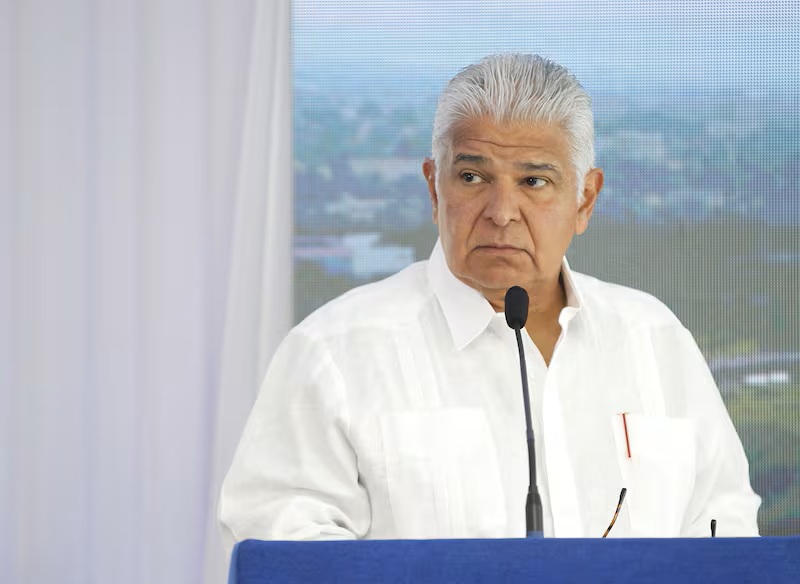HEALTH WATCH: AIDS program saving lives,money

Panama is one of a small group of countries that has adopted a Canadian initiated program that has drastically cut deaths from AIDS.
By Bohdan Nosyk
RECENTLY , in a Canadian hospital in British Columbia, the province where I live and work, an older man who was suffering from fatigue and post-operative issues was given an HIV test. He wasn’t a member of a high-risk group, but testing for HIV is now standard in many hospitals here.
The man was found to be HIV-positive. His wife, who had experienced fatigue and bruising, was also diagnosed with the disease.
The couple was able to immediately access HIV treatment, leading to rapid health improvement, such as better immune function, even though they’d lived undiagnosed for several years.
This is standard practice in BC, where testing for HIV is recommended for everyone aged 18 to 70. And if people discover they are HIV-positive, doctors can connect them to a program providing immediate, universal access to antiretroviral treatment, the most cutting-edge medication currently available.
This process contrasts sharply that of neighbouring United States.

There, the US Centres for Disease Control and Prevention (CDC) recommends universal HIV testing, but the Republican-controlled congress is seeking to roll back the Affordable Care Act, which includes a provision that prohibits insurers from refusing treatment for “pre-existing conditions” (including HIV).
Variations in state-level eligibility criteria for Medicaid and restrictions on the uses of federal funds also continue to pose hurdles to HIV testing and treatment, particularly for marginalized populations.

In the US, about one in eight people living with HIV are unaware of their status. Among Blacks and Latinos, an estimated one in five are unaware of their infection. African Americans are also least likely to get HIV care once diagnosed and one and a half times more likely to die from the disease than white Americans.
In the American south, where HIV is on the rise, many cases go undiagnosed.
An estimated one in six HIV-positive people in Alabama don’t know they have the disease. In Louisiana, nearly a quarter of people have already progressed to AIDS by the time they test positive for HIV.
Even if Americans are diagnosed, treatment, which can cost from $23,835 to $42,714 a year, may well be out of their financial reach. According to the CDC, in 2013 only 50% of Americans diagnosed with HIV had received treatment in the past year.
The threatened repeal of the Affordable Care Act under the new administration could worsen health outcomes for people with HIV.
‘90-90-90’ goal
America’s diagnosis and treatment statistics already fall well short of the United Nations’ “90-90-90” target. To have an AIDS-free generation by 2030, UNAIDS has declared that 90% of those living with HIV should be diagnosed; 90% of those diagnosed should be on treatment; and 90% of those on treatment should show a suppressed viral load.
TasP
The 90-90-90 target is based on the concept of “treatment as prevention” (TasP), which was first introduced to the world in 2006 by the director of British Columbia’s Centre for Excellence in HIV/AIDS (BC-CfE), Dr. Julio Montaner.
Years of scientific evidence has conclusively shown that providing treatment to all people living with HIV – no matter what their economic situation or stage of the disease – improves health and longevity, stops the disease from evolving into AIDS and reduces the likelihood of HIV transmission.
With consistent and sustained treatment, people living with HIV achieve a viral load that is undetectable by standard blood tests, at which point their chances of spreading HIV becomes negligible. A study released in 2014 followed 800 couples in which one partner was HIV-positive with a viral load below 200 copies per mL and found that after two years, none of the partners had been infected.
Cost-effective care
Expanding access to earlier treatment through TasP not only save lives, it also saves money.
At the BC-CfE, where I am a health economist, we’ve researched how to best allocate resources to improve population health.
Our work has demonstrated that although treatment for one person is expensive in the short term, in the long term it is a cost-effective pathway to curbing the HIV epidemic.
The estimated lifetime health-care cost for individuals infected at age 35 is US$343,222 (60% for antiretroviral medications). For HIV-negative individuals in HIV high-risk groups, the lifetime health-care cost estimate is US$101,652. Therefore, each HIV infection avoided saves US$241,570.
In British Columbia, where TasP was implemented with support from the provincial government, there has been a consistent decline in new HIV cases and a nearly 90% decrease in HIV-related morbidity and mortality.
Our research has determined that this expanded HIV testing and treatment could save BC up to C$66.5 million in public spending over 25 years by averting new infections, delaying or avoiding costly hospital stays and enabling people living with HIV to stay in the workplace.
Such a regime could pave the way to a more sustainable health-care system, which is an important incentive in countries with rising health-care costs.
Today, with a US$2.5 million grant from the US National Institute of Drug Abuse (NIDA), the BC-CfE is providing economic modelling and investigating the optimal combination of interventions to fight HIV epidemics in New York, Los Angeles, Baltimore, Miami, Atlanta and Seattle.
The BC-CfE is also consulting with China’s Centre for Disease Control.
Though China has generally low HIV rates, certain regions have higher prevalence of the disease, and challenges remain in reaching the population groups most affected by HIV. The BC-CfE has shown that streamlining the testing process in a largely rural province of China could be a cost-effective way of more quickly connecting people to treatment.
China was the first country to adopt TasP as a strategy to combat HIV and AIDS, in 2013. In 2016, it announced that treatment through antiretroviral therapy should be available to all people diagnosed with HIV.
The BC Centre for Excellence in HIV/AIDS signing an agreement to support China’s efforts to address HIV, in Beijing. BC Centre for Excellence in HIV/AIDS, Author provided
Since 2013 Panama, Brazil, Spain, France and Sierra Leone have joined China in adopting TasP, as have the US cities of San Francisco and Washington, DC.
There are challenges, of course. Social determinants of health, such as homelessness, unemployment and mental health issues, still pose barriers to care. BC connects especially vulnerable and hard-to-reach populations to treatment with dedicated efforts by outreach workers, social workers and nurses.
Addressing their needs for housing, proper nutrition or counselling first can enable a routine of consistent HIV care. But such targeted outreach is harder to coordinate in rural areas and in developing nations.
Still, interventions such as TasP that meet key populations where they are, rather than require behavioural change or financial hardship to obtain treatment, are one proven path to expanding access to HIV testing, care and treatment.
It is possible to end AIDS. All that is required is the political will to do so.
Bohdan Nosyk is Associate Professor and Endowed Chair, Economics of HIV/AIDS at the Faculty of Health Sciences, Simon Fraser University.





